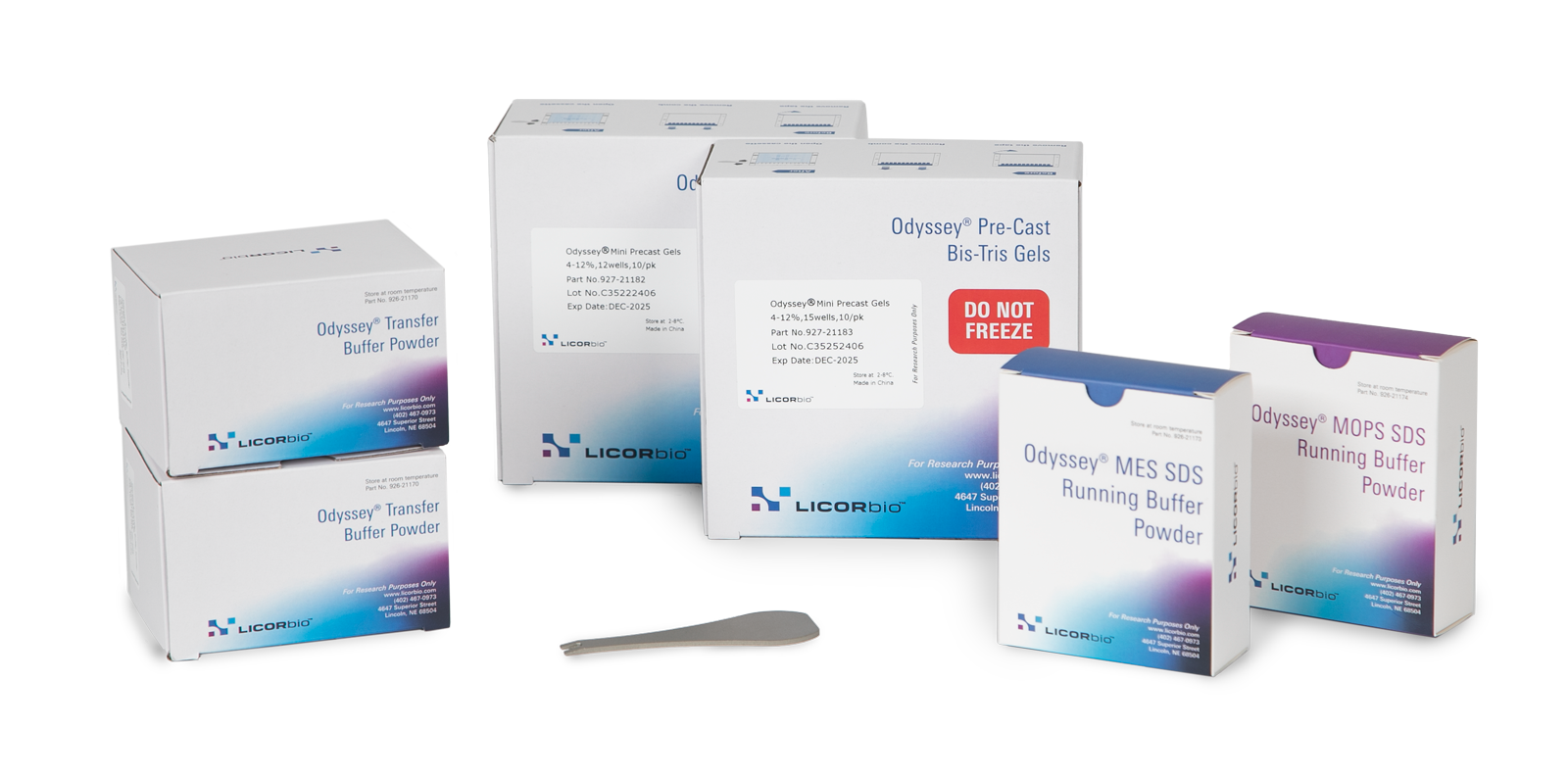EMSA/Gel Shift Assays
The EMSA (electrophoretic mobility shift assay) is used to study protein:DNA complexes and interactions. Protein:DNA complexes migrate more slowly than unbound linear DNA on a non-denaturing gel, causing a "shift."
Also called "gel shift" or "gel retardation" assays, the EMSA can be used to analyze sequence-specific recognition of nucleic acids by proteins.

Advantages of Near-Infrared Fluorescence
Near-infrared fluorescence EMSA offers a safe, sensitive alternative to radioactive EMSA techniques.
You can easily adapt traditional, radioactive EMSA protocols to non-hazardous near-infrared fluorescence EMSA detection. Use IRDye® end-labeled oligonucleotides and image with the Odyssey® CLx Infrared Imager or Odyssey Classic Infrared Imager. You can perform the assay and obtain results in less than 2 hours with near-infrared fluorescence, as compared to several hours or overnight with other methods.


EMSAs using near-infrared fluorescence technology are used to study:
- Regulation of transcription
- DNA replication
- DNA repair
- RNA processing

You can detect protein:DNA complexes in the wet gel, without gel drying or film exposure. If needed, you can image the gel in the cassette on the Odyssey scanner surface to evaluate if the gel has run long enough, and if not, place it back in the chamber to electrophorese further.
Ready-to-use labeled oligos are available for a variety of common consensus sequences. Other IRDye end-labeled oligonucleotides and custom oligos are available through Integrated DNA Technologies (IDT), TriLink BioTechnologies, or Metabion International AG.

Comparison of Infrared Fluorescent EMSA and Other Methods
Compare EMSA detection methods and find out how you can increase safety and save time using infrared detection.
| IRDye® Infrared Fluorescence Dyes | Radioisotopes | Biotin/Streptavidin (Such as Thermo Scientific LightShift) |
|---|---|---|
| Total Time: 1.5h | Total Time: 4.5 – 24h | Total Time: 4.5 – 5h |
| Easy access and disposal | Regulatory restrictions, disposal hassles, and cost | Contact manufacturer for details |
| Fluorescent oligos have extended stability | Short half-life of labeled oligos | Chemiluminescent signal is unstable |
| Non-hazardous | Hazardous | Contact manufacturer for details |
| Wet gel imaged without removing gel plates | Gel drying and film/phosphor-screen exposure required | Membrane transfer is required |
| Fast, convenient, direct detection | Time-consuming, inconvenient detection | Indirect detection method. Blocking, streptavidin incubation, and washes are required |
| Gel can be replaced and run longer, if needed | Gel run time cannot be extended | Gel run time cannot be extended |
| Results available in less than 2 hours | Results typically not obtained until the next day | Detection steps add several hours to protocol |
Typical EMSA Workflow
Prepare reactions and incubate 20-30 minutes

Separate by non-denatured electrophoresis

Image gel with Odyssey Imager and analyze
*If needed, repeat step 3 and image again.

